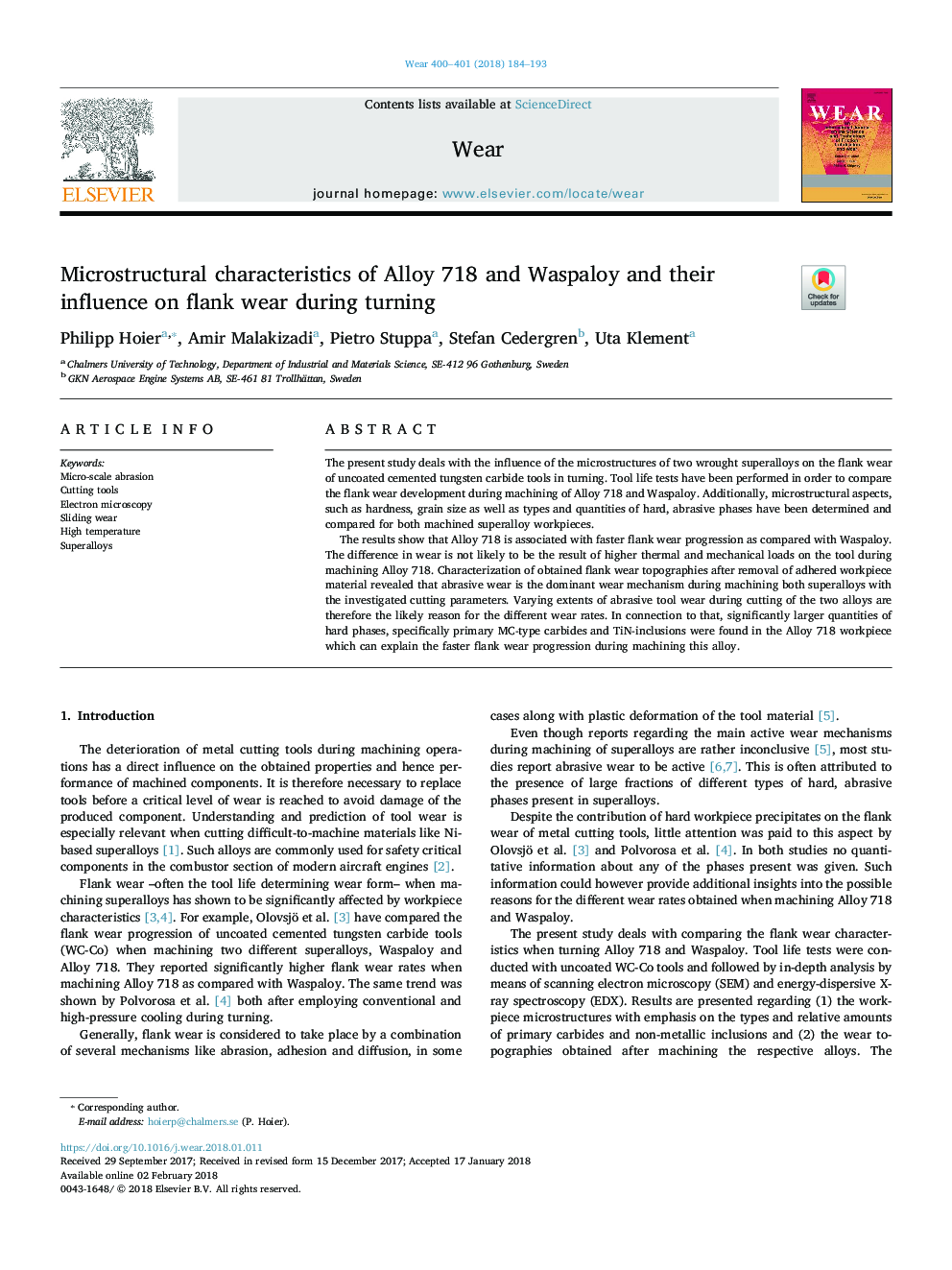| Article ID | Journal | Published Year | Pages | File Type |
|---|---|---|---|---|
| 7003973 | Wear | 2018 | 10 Pages |
Abstract
The results show that Alloy 718 is associated with faster flank wear progression as compared with Waspaloy. The difference in wear is not likely to be the result of higher thermal and mechanical loads on the tool during machining Alloy 718. Characterization of obtained flank wear topographies after removal of adhered workpiece material revealed that abrasive wear is the dominant wear mechanism during machining both superalloys with the investigated cutting parameters. Varying extents of abrasive tool wear during cutting of the two alloys are therefore the likely reason for the different wear rates. In connection to that, significantly larger quantities of hard phases, specifically primary MC-type carbides and TiN-inclusions were found in the Alloy 718 workpiece which can explain the faster flank wear progression during machining this alloy.
Keywords
Related Topics
Physical Sciences and Engineering
Chemical Engineering
Colloid and Surface Chemistry
Authors
Philipp Hoier, Amir Malakizadi, Pietro Stuppa, Stefan Cedergren, Uta Klement,
